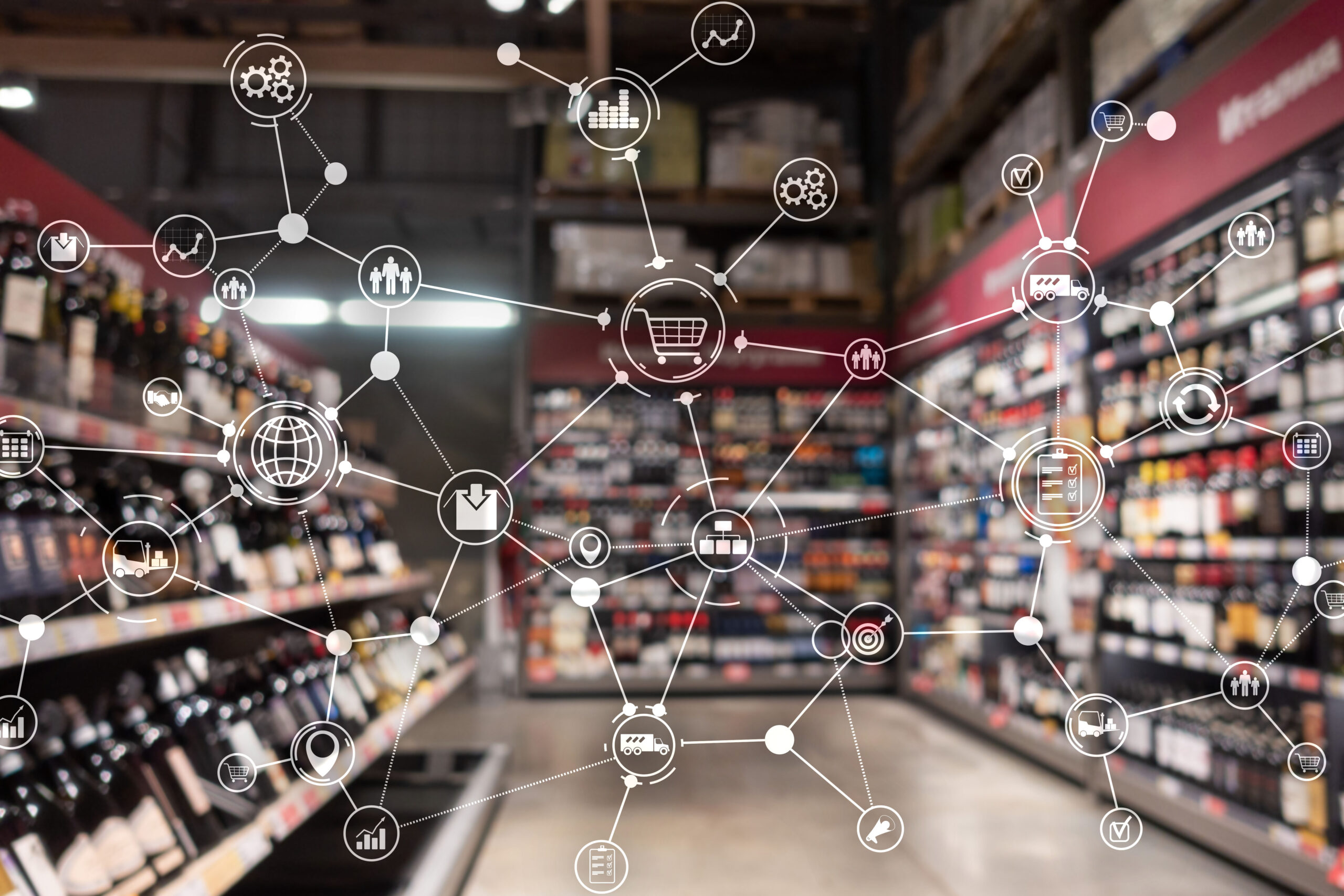In the ever-evolving retail landscape, businesses often encounter blind spots, those elusive gaps in understanding customer behavior and preferences that can significantly impact success. Consumer insights–the valuable data derived from studying consumer actions and motivations–play a pivotal role in addressing these blind spots and shaping effective retail strategies. This blog post delves into retail blind spots and the profound significance of executing shopper insights.
Moreover, we explore the transformative potential of Augmented Reality (AR) in empowering retailers to overcome these challenges and execute shopper insights with unprecedented precision and success. Join us on this journey as we uncover the critical role of AR technology in illuminating the hidden aspects of customer interactions and revolutionizing how retailers perceive and respond to their consumers’ needs and preferences.
Understanding retail blind spots
Understanding retail blind spots is essential for businesses to thrive in today’s competitive market. The terms refers to the areas within a retail operation where critical data and insights are lacking or inadequately understood. These blind spots can take various forms, such as gaps in customer demographics, inefficient inventory management, or overlooked trends in consumer behavior. Identifying and addressing these blind spots is crucial because failing to do so can lead to missed opportunities, lost revenue, and diminished customer satisfaction.
The potential consequences of not addressing blind spots in retail operations can be far-reaching and detrimental. With a comprehensive understanding of customer preferences and behaviors, retailers can avoid misguided decisions, leading to ineffective marketing strategies, underperforming product assortments, and suboptimal store layouts. These missteps can result in reduced foot traffic, diminished sales, eroded brand loyalty, and, ultimately, reduced customer retention.
Decisions should be data-driven to mitigate these risks. A commitment to data-driven practices unlocks growth opportunities. It enhances customer experiences, enabling retailers to remain agile and competitive in a dynamic marketplace.
The value of shopper insights in retail
To understand the value of shopper insights in retail, it’s first essential to comprehend shopper insights.
Shopper insights encompass the valuable data and in-depth understanding of customer behaviors, preferences, and motivations that retailers gather to gain a comprehensive view of their target audience. It involves analyzing various aspects of the shopping journey, including purchase decisions, browsing patterns, and engagement with new products or services.
When it comes to gathering valuable insights and metrics on the shopper journey and shopper preferences, retailers have a range of methodologies at their disposal. Traditional options like focus groups and roundtable discussions remain popular for gathering qualitative feedback and understanding customer sentiments. However, for more precise and immersive data collection, cutting-edge methods such as virtual customer research are gaining traction, allowing retailers to delve deeper into shopper behavior and preferences with a correlation rate of 91%.
Additionally, market research benchmarks play a crucial role in assessing market share and competitive positioning relative to historical data. For example, InContext offers a wealth of information with over 15 years of comparative data, helping businesses understand their market standing. Our expansive database covers 50+ product categories, featuring over 550 studies and 2,000 study cells, continuously growing and updating to provide the latest industry trends and insights.
By delving into these insights, retailers can uncover hidden trends, identify pain points, and recognize opportunities to craft an action plan that enhances the shopping experience.
How shopper insights can drive improvements in retail
Shopper insights can drive improvements in retail through:
Personalization of product assortment: Shopper insights give retailers a deeper understanding of customer preferences, buying patterns, and demands. With this knowledge, retailers can curate a personalized product assortment that aligns with their target audience’s specific needs and desires, increasing the likelihood of conversion and customer satisfaction.
Optimized product placement: By analyzing shopper behavior and navigation patterns within the store, retailers can strategically position products to maximize visibility and appeal. Placing popular or complementary items together can increase cross-selling opportunities and enhance the shopping experience.
Identification of high-traffic areas: Shopper insights allow retailers to identify high-traffic areas within the store. Utilizing this information, they can allocate prime shelf space or promotional displays to attract attention to specific products, further boosting sales and customer engagement.
Seamless store layout and flow: Understanding shopper movements and preferences enables retailers to design a more intuitive and seamless store layout. By reducing bottlenecks and optimizing the flow, customers can navigate the store effortlessly, improving satisfaction and increasing dwell time.
Informed pricing strategies: Shopper insights can shed light on price sensitivity and willingness to pay for different products. With this information, retailers can implement dynamic pricing strategies, offer targeted discounts, and optimize pricing to drive sales without sacrificing profitability.
Enhanced customer service: Through shopper insights, retailers can identify common pain points and areas for improvement in the customer service experience. Armed with this knowledge, they can train staff accordingly, implement self-service options, and develop customer-centric policies that foster long-term loyalty.
Real-time inventory management: Understanding customer preferences and demand patterns allows retailers to manage inventory more efficiently. By predicting popular items and restocking accordingly, retailers can reduce stockouts, minimize excess inventory, and improve overall inventory turnover.
Effective marketing campaigns: Shopper insights help retailers identify the most effective marketing channels and messages for their target audience. This enables retailers to tailor marketing campaigns that resonate with customers, leading to higher engagement and conversion rates.
Feedback-driven improvements: Leveraging shopper insights, retailers can continually collect valuable customer feedback to refine their offerings. Customer feedback helps identify areas for improvement, gauge satisfaction levels, and implement changes that align with customer expectations.
Innovative customer experiences: By understanding customer preferences and expectations, retailers can introduce creative and experiential elements to the shopping journey. Whether through interactive displays, augmented reality experiences, or personalized recommendations, shopper insights create memorable and unique customer experiences that set retailers apart.
How does this look in the real world?
Retail giant Target has successfully implemented a widespread “guest-centric” strategy driven by shopper insights. Through extensive data analysis and customer feedback, Target gained valuable insights into their shoppers’ preferences, shopping habits, and needs to make significant changes to their product assortment, store layout, and customer experience.
For instance, their “Good & Gather” brand offers a wide range of organic and healthy food options to attract health-conscious shoppers that may otherwise go to different grocery stores. Now, these shoppers can find their groceries and household items in the same place, increasing sales. In addition to product assortment improvements, Target optimized its store layout based on customer flow and preferences. Their infamous “dollar section” at the front of the store places affordable, seasonal items you can browse when you enter and before you check out — one of their most lucrative strategies to date.
Augmented reality (AR) in retail
So where does augmented reality fit into all of this? AR is a cutting-edge technology that has revolutionized the retail industry, providing unique opportunities for businesses to make crucial decisions about store layout and product placement. By seamlessly blending virtual images, information, and interactive content into the real-world environment, AR presents a unique opportunity for businesses.
AR for interactive product displays and additional information allows retailers to strategically visualize product placements with AR that drive increased visibility and sales before adding the actual modifications in the store.
Using AR in retail to execute shopper insights
Once the blind spots have been identified and you’ve used insight to come up with a plan, now it’s time to execute. With the power of AR, retailers can create virtual overlays of unique store layouts and promotions more effectively, leveraging proven shopper insights. By sharing this information with stakeholders including store managers and team members, retailers gain the ability to efficiently communicate optimized product placements, aisle arrangements, and displays that ultimately enhance customer flow and maximize the visibility of high-demand products.
AR can help streamline execution with:
AR store mock-ups for validation and compliance: Once the store layout decisions have been made, AR displays virtual mock-ups that showcase the desired execution. With AR, retailers can set specific compliance standards for store displays, signage, and product positioning, ensuring a consistent and cohesive shopping experience across all locations. These virtual store mock-ups become indispensable guides for store employees, providing them with clear visual references to execute the plan accurately. With AR at their fingertips, store staff can seamlessly follow the optimized layouts, product placements, and visual merchandising guidelines, which ultimately leads to easier concept validation and increased compliance with the retailer’s vision for the store.
AR training and onboarding: Through interactive AR modules, retailers can offer engaging and immersive step-by-step guides to store employees, covering tasks such as arranging displays, stocking shelves, and adhering to visual merchandising standards. By providing real-time visual instructions and demonstrations, AR modules enable store staff to grasp concepts more effectively and gain practical experience virtually. This approach fosters a deeper understanding of the store execution process and ensures consistency across all locations. As employees become proficient in following the AR-guided instructions, they can execute tasks with greater accuracy and adhere to the retailer’s defined compliance standards.
AR visual guidelines:
In addition to in-store training, leveraging the capabilities of AR allows retailers to provide store employees with detailed visual guidelines, revolutionizing the store execution process. As employees navigate the store, AR overlays on real-world shelves and displays present clear, visual cues indicating precisely where specific products should be placed. By incorporating AR-powered visual guidelines into their daily tasks, employees can confidently adhere to the retailer’s visual merchandising standards, resulting in a cohesive and visually appealing store environment.
Why leverage InContext AR retail tools
Using InContext’s AR retail tools can significantly benefit your field reps and sales team. With augmented reality, sales reps can elevate their sales pitch by presenting display and marketing ideas in an engaging and immersive manner. The ease of use and increased buyer engagement offered by AR will delight your field reps, making it a valuable addition to their selling arsenal.
Furthermore, embracing AR can set your business apart from the competition. InContext’s 3D visualizations, allow you to demonstrate how your concepts will come to life in the store with immediate understanding. This unique sales tool gives you a proven, impactful way to showcase your ideas, leaving a lasting impression on potential clients and gaining a competitive edge in the market.
Learn more about the role of AR in shopper insights with InContext
Using AR to uncover shopper insights is a powerful tool in retail. Shopper insights are crucial in understanding consumer behavior, preferences, and decision-making processes, which are pivotal for retail success. However, addressing blind spots in these insights can be challenging, potentially leading to missed opportunities and less effective strategies.
AR emerges as a transformative force, offering innovative solutions to overcome these obstacles. By harnessing AR technology, retailers can better understand their customers, create immersive shopping experiences, and execute more targeted and personalized marketing campaigns.
InContext’s AR retail tools save you time and resources, ultimately leading to increased sales. Contact us today for more information or to schedule a demo and discover the future of retail with InContext.





